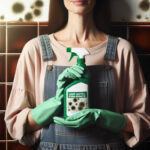The Latest Treatment Options for Finger Nail Fungus

The Latest Treatment Options for Finger Nail Fungus
Understanding Finger Nail Fungus: An Overview
Let’s talk about finger nail fungus—a pesky problem that many of us face without really understanding what’s going on. Simply put, it's a fungal infection that attacks your fingernails, often resulting in discolouration, thickening, and even some discomfort. In this article, we’ll break down the nitty-gritty of what finger nail fungus really is and explore both the old-school and cutting-edge treatment options. Over the years, I've seen first-hand just how important early detection and a well-rounded treatment plan can be in stopping this issue in its tracks.
What is Finger Nail Fungus?
When we say “finger nail fungus,” we’re referring to an infection that usually takes over the fingernails—though similar problems can pop up on other nails too. The culprits are often dermatophytes, yeasts, or molds that sneak into the nail bed, causing yellowing, crumbling, or thickened nails. Knowing exactly what you’re dealing with can really empower you to seek the right treatment before it gets worse. Even though this condition is fairly common, there's sometimes a stigma attached that might cause delays in getting help, and that’s something we want to avoid.
Recognizing Early Signs and Symptoms in Finger Nail Fungus
Catching the early signs of finger nail fungus can totally change the game. Look out for subtle shifts like a change in colour—maybe a bit of yellowing—an increase in brittleness, or even a change in nail shape. Many folks notice tiny white or yellow spots that gradually spread, sometimes making the nail crumbly. It's interesting how these small details can signal the start of an infection. By keeping an eye on these early symptoms and chatting with a healthcare pro as soon as something seems off, you’re setting yourself up for a smoother path to recovery and healthier nails down the line.
Risk Factors and Common Causes of Finger Nail Fungus
Finger nail fungus usually creeps in due to a mix of environmental factors and our own habits. Think about it—constant exposure to warm and damp settings, minor nail injuries, or even a weakened immune system can all pave the way for fungus to settle in. Plus, sharing nail tools or using communal surfaces in nail salons can increase your risk. Whether your job makes you more vulnerable or you simply love your nail art, knowing these risk factors can help you make smarter choices to protect your nails. My years of experience tell me that understanding these dangers is half the battle won.
Medical Treatment Approaches for Finger Nail Fungus
Modern medicine has come a long way in treating finger nail fungus, offering several strong approaches tailored to how severe the infection is and your overall health. Depending on your situation, you might end up with oral medications or even state-of-the-art laser treatments. I've seen lots of patients benefit when their treatment is carefully planned to match their individual needs, not only restoring healthy nails but also boosting confidence. Let’s dive into three main medical treatments that have really made a difference for many battling this condition.
Oral Antifungals for Finger Nail Fungus
One popular route for tackling finger nail fungus is using oral antifungal medications. These are often the go-to when the infection is extensive or just won’t quit. They work from the inside out, reaching the nail bed more effectively than what you can get with topical options. Although you might need to stick with them for several weeks or even months, many patients eventually notice their nails looking a lot better and feeling stronger. Of course, with any medication comes potential side effects, so it’s important to keep an eye on things and follow your doctor’s advice. In my experience, while oral antifungals can be incredibly effective, they always work best as part of a broader, personalized treatment plan.
Topical Medications and Their Effectiveness
If you’re not too keen on taking pills, topical treatments are a gentler alternative. These creams, lacquers, or solutions are applied directly to the affected area and gradually work their magic by eliminating the fungal cells. They generally shine when used early on, though results can take a bit of time to show up. The upside? They’re usually well-tolerated and tend to have fewer side effects compared to oral meds. In practice, I often combine these with other treatments to boost their overall effectiveness. Remember, consistency is key—regular application and good nail hygiene can make all the difference.
Laser and Light Therapies in Combating Finger Nail Fungus
Laser and light therapies are the new kids on the block when it comes to treating finger nail fungus. These methods use focused light beams to target and disrupt the fungus, making them an attractive non-invasive option with a lower risk of systemic side effects. What’s cool is that many patients see improvements sooner compared to traditional treatments, which is always a plus if you're eager for results. Admittedly, these sessions can add up in cost and might require a few visits, but I’ve found that pairing laser therapy with other treatment options can really round out the benefits, offering a more comprehensive approach to keeping your nails healthy.
Natural and Alternative Therapies for Finger Nail Fungus
Beyond conventional treatments, plenty of natural and alternative therapies have gotten a lot of attention for fighting finger nail fungus. Many people turn to these methods hoping to sidestep harsh side effects and take a softer approach to managing their condition. Whether you're drawn to essential oils, tweaking your diet, or trying out home remedies, incorporating these methods can sometimes give your usual treatments a helpful boost. Over the years, I’ve seen that a more holistic take—looking at the body as a whole rather than just the symptoms—can be very appealing and effective.
Essential Oils and Home Remedies for Finger Nail Fungus
Essential oils like tea tree, oregano, and eucalyptus have long been praised for their natural antifungal properties. When diluted with a carrier oil and applied directly, they can help dial down the infection and soothe irritated skin. Many find these remedies accessible and easy to use, even if the research is still catching up to our daily experiences. I've seen patients make noticeable strides by incorporating these oils into their regular nail care routines. That said, it’s smart to check with your healthcare provider before diving in, especially if you have sensitive skin or allergies. For some folks, these home remedies serve as a gentle first step in combating finger nail fungus.
Dietary Adjustments to Support Finger Nail Fungus Treatment
What you eat really does matter when it comes to fighting off infections like finger nail fungus. A diet rich in essential vitamins and minerals can give your immune system the upper hand, making it tougher for fungal invaders to gain a foothold. Foods loaded with antioxidants, vitamin E, and zinc are fantastic for your nails, while cutting back on sugary and processed goodies often helps reduce inflammation. In my years working with patients, I’ve seen that making these dietary tweaks can have a positive ripple effect on both your nail health and overall wellness. Think of your diet as another tool in your anti-fungus toolkit.
Prevention and Lifestyle Adjustments for Finger Nail Fungus
When it comes to finger nail fungus, prevention really is the best medicine. Simple changes in your daily routine can keep those fungal troubles at bay. In this section, we’ll chat about practical tips like maintaining proper hygiene, caring for your nails the right way, and even picking the right footwear. These suggestions come from both my clinical experiences and a genuine understanding of preventive care—small, consistent adjustments can really build up a strong defense against fungal growth.
Hygiene Practices to Prevent Finger Nail Fungus
Keeping up with good hygiene is your first line of defense. Regular handwashing, ensuring your hands are completely dry after exposure to moisture, and sticking to your own nail care tools can make a big difference. Also, it's wise to avoid sharing personal grooming items, especially in nail salons where the risk of cross-contamination is higher. I've seen that a little extra care—like sanitizing your tools and hands often—can really fortify your defenses against unwanted infections. It might seem like a small detail, but these everyday habits can add up to significant protection over time.
Nail Care and Maintenance for Finger Nail Fungus
Along with regular hygiene, proper nail care is crucial. Keeping your nails trimmed, filing rough edges gently, and steering clear of overly aggressive cuticle care can help maintain their health. It’s also a smart idea to give your nails some breathing space by not constantly sporting artificial enhancements. I often recommend periodic nail check-ups, which can help catch any early signs of trouble. This consistent nail care routine works hand in hand with other preventive measures, making your nails less inviting to fungal foes while boosting their overall strength and look.
Choosing the Right Footwear to Avoid Finger Nail Fungus
Even though we’re talking about finger nail fungus, paying attention to footwear is part of a broader strategy in keeping fungal infections at bay. The same principles—avoiding damp, warm environments—apply to both hand and foot care. Picking shoes that let your feet breathe and dry quickly can play a small, but important, role in overall fungal prevention. For those dealing with infections on both ends, ensuring your shoes are clean and well-fitted might just lower your overall exposure to those pesky fungal spores. My experience tells me that it’s the little details, whether it’s hand hygiene or right shoe care, that contribute to long-term success.
Surgical and Advanced Procedures in Finger Nail Fungus Treatment
Sometimes, when conventional treatments just aren’t cutting it or the infection is especially stubborn, more advanced procedures come into play. Techniques like nail debridement, cryotherapy, and laser ablation are designed to hit the fungus hard and fast. While the idea of having surgery might sound a bit intimidating, these procedures are performed with precision to minimize discomfort and reduce the chance of the fungus coming back. Drawing on years of successful outcomes, I’ve seen that these more aggressive options can clear the way for healthier nail regrowth and an overall boost in nail confidence.
Nail Debridement Options for Finger Nail Fungus
Nail debridement involves carefully removing the infected part of the nail to let healthier tissue come to the surface. This not only eases the discomfort associated with a thickened nail but also sets the stage for other treatments to be more effective. Whether done manually by a seasoned professional or with specialized tools, debridement is often recommended for stubborn cases where the nail's thickening blocks helpful treatments from reaching the infection. In my practice, I've found that a meticulous debridement, followed by proper aftercare, can really enhance the performance of further treatment efforts and lead to noticeably improved nail health.
Cryotherapy and Laser Ablation Techniques
If traditional methods aren’t giving you the results you need, cryotherapy and laser ablation offer an advanced alternative. Cryotherapy uses controlled cold to freeze and effectively wipe out the fungus, while laser ablation employs concentrated light energy to target and destroy fungal cells. Although these techniques require specialized equipment and multiple sessions, many patients appreciate their minimally invasive nature and the quicker recovery times they can offer. I've noticed that when these treatments are combined with standard therapies, the overall benefits can truly be cumulative, leading to lasting improvements and a lower chance of recurrence.
Integrative Approaches to Managing Finger Nail Fungus
These days, many experts are turning to integrative care—mixing traditional medical treatments with alternative therapies—to tackle finger nail fungus from every angle. This holistic approach addresses both the immediate symptoms and the overall health factors that might be fueling the problem. Drawing on a mix of clinical know-how and real-world experience, this method shows that sometimes, the whole really is greater than the sum of its parts. With each treatment addressing different facets of the issue, patients often see sustained improvements and an enhanced quality of life.
Combining Traditional and Alternative Therapies for Finger Nail Fungus
Imagine pairing the direct action of oral antifungals or laser treatments with the supportive boost of dietary changes and essential oils—this blend of conventional and alternative therapies offers a well-rounded approach to managing finger nail fungus. No one treatment can do it all alone, but together, they work in harmony to tackle both the visible symptoms and the underlying causes of the infection. Over the years, I’ve seen patients achieve remarkable recoveries when these different strategies come together, helping their bodies naturally fend off and heal from fungal attacks.
Developing Comprehensive Care Plans
At the heart of successfully managing finger nail fungus is a care plan that’s as unique as you are. Every individual’s journey with the infection is different, which is why a personalized blend of medical treatments, lifestyle tweaks, and even integrative therapies is so crucial. A solid plan not only focuses on getting rid of the fungus but also on preventing its return. In my experience, a strategy that evolves with your progress—and that takes into account your personal history and risk factors—offers the best shot at long-term nail health.
Real-life Case Studies in Finger Nail Fungus Management
There’s no substitute for real-life success stories when it comes to understanding finger nail fungus treatments. Many patients who battled chronic infections eventually found relief by embracing integrative approaches. One notable case was a patient who had tried everything under the sun before turning to a mix of conventional and alternative strategies. Their journey, like many others I’ve seen, illustrates just how powerful a tailored, comprehensive approach can be when it comes to overcoming stubborn fungal infections.






